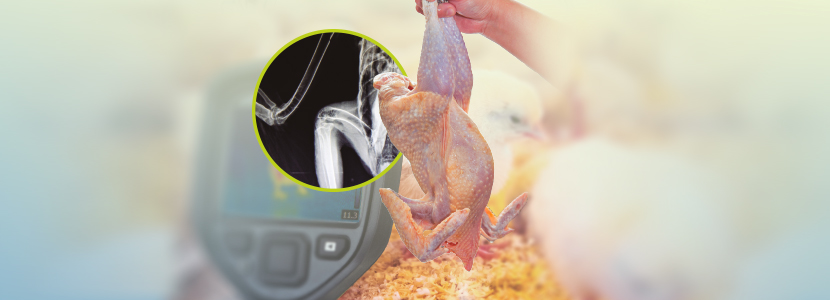Content available at: Español (Spanish)
Technological advances in poultry production has led to, as unwanted side effects, diverse types of chicken carcass related problems. This is of great economic significance for poultry meat producers.
All carcass problems have, to a greater or lesser extent, components of genetic, health, management and nutritional origin. In this article, we will focus on nutrition’s impact, all the while recognizing that the solution is not only found in this domain, but in the collective effects of the aforementioned components.
The problems discussed here are considered to be of utmost relevance, based on the experience acquired during visits to Spanish slaughterhouses in recent years:
- Foot-pad dermatitis
- Skin Resistance
- Bone strength
- Vascular resistance
- Myopathies
1.-Foot-pad dermatitis
Foot pad dermatitis is a multifactorial problem in the poultry industry, and is of great economic importance (sale of legs and animal welfare criteria that directly affects the maximum densities in kg/m2 usable on the farm). The factors that influence the humidity of the litter, especially those related to management, must be controlled:
- Type and quantity of litter
- Drinker management (pressure, height, maintenance)
- Adequate ventilation
- Animal density
Among the Nutritional factors that can limit litter humidity, it would be necessary to consider:
- Minimizing protein content by maintaining correct amino acid levels (by using industrial amino acids)
- Use of raw materials as digestible as possible (control of antinutritional factors, quality of fats)
- Use of enzymes (carbohydrases and phytases)
- Favor the development of the gizzard to improve feed digestibility and intestinal health (physical structure of the feed, particle size, inclusion of fibrous raw materials)
- Nutritional density of feed
- Sodium levels in feed
- Additives that favor intestinal health (slow release short and medium chain organic acids, some essential oils, also slow release, probiotics, etc.)
- Control of the microbiological and physical-chemical quality of the water (sanitization and acidification of the water)
- Microbiological control of raw materials and feed
- Mycotoxin control
- You also have to consider the nutritional components that promote better skin resistance, such as:
- Highly available trace elements (especially zinc (Zn))
- Vitamins such as Biotin, which we will discuss in the next section.
Skin Resistance
The presence of scratches, scabs and tears in the skin after going through the scalding and plucking process is another important reason for carcass collection in slaughterhouses. Anything that causes a certain nervousness will lead to more problems. Notable management factors to consider are:
- Density
- Availability of feeders and drinkers
- Restricted feeding
- Ventilation
- Light intensity
- Light restriction
- Flock thinning
- Capture process
TO CONTINUE READING REGISTER IT IS COMPLETELY FREE Access to articles in PDF
Keep up to date with our newsletters
Receive the magazine for free in digital version REGISTRATION ACCESS
YOUR ACCOUNT LOGIN Lost your password?

